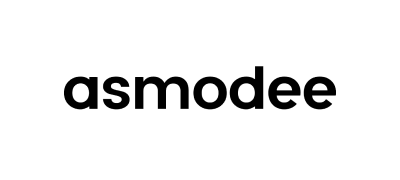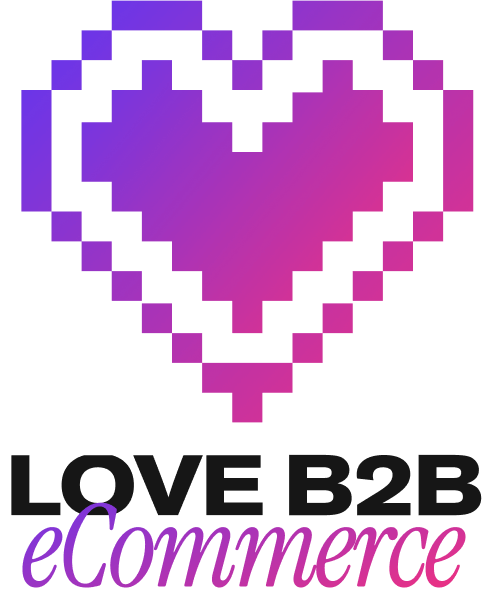B2B eCommerce customer onboarding is one of the most important parts of the customer experience – so it’s essential to get it right.
From the minute they sign up, buyers expect to be able to navigate your website, place orders, and view their account information – often without a guided tour.
While it’s important to have a structured, team-led onboarding process for the B2B buyers who need it, brands must keep up with evolving expectations. That means creating a seamless onboarding experience for self-serve buyers, too.
There is a place for welcome emails and webinars, as detailed in our guide here - but that’s no longer enough. B2C expectations are creeping into B2B more and more, meaning wholesale buyers now want increased autonomy.
Self-serve onboarding isn’t just a user-experience upgrade. It’s a complete shift in how B2B relationships begin…
Modern B2B buyer profiles
Today’s wholesale buyers behave very differently from even five years ago.
A growing percentage of B2B buyers now prefer self-service over more traditional ordering methods, like speaking to a rep. They expect the same intuitive usability they get from B2C platforms.
While it’s largely due to a generational shift, it’s becoming the norm - and businesses need to match the pace.
Buyers are prioritising speed, clarity, and confidence. There is still immense value to be added by sales teams - but it’s important to let customers decide on the balance between autonomy and support.
Striking this balance in your onboarding process for B2B eCommerce customers is crucial to success.
Why self-serve onboarding is a game-changer
For buyers, self-serve onboarding supports how they work. They want immediate access, full visibility of stock levels and tailored pricing, and the confidence to place their first order quickly.
They value My Account sections where they can track and manage orders in their own time. They want the option of hand-held onboarding – but not the obligation.
The best thing? Successful B2B eCommerce customer onboarding benefits the business, too.
Empowering your customers to self-serve during their onboarding (and beyond) means less admin and less dependency on your support team.
You’ll likely see higher activation and adoption rates among those who find their own balance between self-led and team-led onboarding.
There is still value in human touchpoints
Of course, this doesn’t mean no human interactions or structured onboarding email flow. We still continuously vouch for this type of B2B eCommerce customer onboarding process - which you can explore in full.
It simply means elevating the human touch while providing a seamless self-serve onboarding experience where required.
By allowing buyers to explore your platform themselves, your reps spend more time on building revenue-driving relationships - not troubleshooting log-ins.
How does it look in real life?
Great self-serve onboarding is centred around personalisation.
From the moment a buyer logs in, they should instantly see tailored price lists, product ranges, and payment methods. This removes guesswork and reduces reliance on your team.
In-platform guidance also plays a part. Tooltips, onboarding checklists, and optional tutorials can point users to underused features and new ordering tools - without overwhelming them.
Add in handy information boxes for features that you know have typically been under-adopted, or tips for using any new tools you’ve recently enabled. Smart workflows support hybrid onboarding, too. Trigger-based emails can introduce time-saving features or promote reordering tools to frequent buyers.
Payment setup is another big one. For example, using SparkLayer, you can:
- Segment buyers into Customer Groups (VIPs, new customers, inactive accounts, etc)
- Auto-assign the right payment method (e.g. net terms for trusted buyers)
- Display delivery times and real-time stock levels
By doing this, you’re removing uncertainty and making it clear what route each buyer can take.
Further to this, you can add information on delivery times and stock levels - just as B2C brands do. This can form a key part of your B2B eCommerce customer onboarding process.
The more intuitive your site feels, the fewer support tickets your team will see.
How do you know if your onboarding process for B2B eCommerce customers is working?
Improving your self-serve onboarding is step one. Step two is where the data comes in.
Onboarding is only powerful when it’s working – which is why tracking metrics is key. Consider these three core metrics to begin:
- Activation rate - how many new accounts log in?
- Time to first order (TTFO) - how quickly do they place orders and add value?
- Fallback to manual order rate - how many customers revert back to phone/ emails?
Monitoring buyer behaviour uncovers friction points and drop-offs, helping you continuously refine onboarding and the entire online ordering journey.
Find the winning balance
Wholesale buyers increasingly expect independence - and when you deliver it, everyone wins.
A strong self-serve onboarding strategy removes friction, boosts confidence, and encourages adoption from day one. Pair that with well-timed human support, and you’ve set the stage for long-lasting customer relationships built on trust, ease, and efficiency.
You can explore more about B2B eCommerce customer onboarding best practices in our Love B2B eCommerce hub. Need bespoke guidance? Book a 1:1 consultation with our team of experts.

















